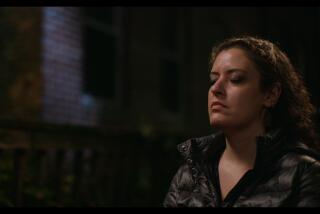Book Review : Pragmatic Help for the Mentally Ill
- Share via
Families Helping Families: Living With Schizophrenia by Families of the Mentally Ill Collective (Norton: $14.95)
Phobia Free: A Medical Breakthrough Linking 90% of All Phobia and Panic Attacks to a Hidden Physical Problem by Harold N. Levinson MD, with Steven Carter (M. Evans & Co.: $14.95)
Modern people are generally amused by the medicine men of primitive cultures, and they may wonder, if they think about it, why the inhabitants of those societies didn’t notice that the medicine men were quacks. Their treatments didn’t work. Yet people kept going to them as if they did, and the medicine men flourished.
The answer probably is that there is something about most people’s faith in “experts”--doctors and others--that prevents critical examination of their results. People like to believe in things, even if there is scant evidence to support that belief.
Faith in Economists
This phenomenon is by no means limited to primitive cultures. In our own, sophisticated time, we continue to consult economists and to give credence to their projections even though few if any of them turn out right.
Nowhere is this more obvious than in the world of mental illness. Even as you read this, people are paying $100 an hour or more to psychiatrists and other therapists, whose cumulative record of success can charitably be described as abysmal. It is said that neurotics are sometimes helped by talking about their problems with trained professionals, but there is no record of success in curing people with long-term, chronic and severe mental problems. No matter what approach is tried or what therapy is used, they don’t get better.
Yet schizophrenia is a reality, and the families of schizophrenics suffer tremendously both from seeing their loved ones in torment and from being unable to do much for them. In an effort to help themselves--if not the mentally ill--several families of schizophrenics in Massachusetts got together a few years ago to exchange information and advice and to provide emotional support for each other. “Families Helping Families” is the result of their collaboration.
Much of the book consists of verbatim and heart-rending accounts of families’ experiences with their schizophrenic children. They try to keep them at home, but the disruption makes it impossible. The schizophrenics move in and out of hospitals, frequently disappearing after being released, creating unbroken torment for their parents, whose lives are turned upside down. One of the parents describes the situation:
“Each time Lora left the hospital under voluntary discharge, I went through an agony of fear, not knowing what was going to happen to her. Her judgment about people was poor; she accepted as friends men and women she scarcely knew. Because she wanted to help the poor and unfortunate, she would walk through the city distributing dollar bills indiscriminately. Every time my phone rang, I was afraid it was the police, telling me they had found her body in an alley, her throat slit by somebody who had stolen her money from her. Only another parent in similar circumstances could understand the relief I felt when she was finally brought back to the hospital each time.”
Skeptical of ‘Talk Therapy’
The families deal with many doctors, many of whom try to be helpful but few of whom can help. Ultimately the families conclude that their children’s illness are the result of organic problems and that the families were not to blame. They are very skeptical of what they call “talk therapy”--traditional analysis--and more inclined to chemical treatments--including megavitamins--and other alternative approaches. In the end, however, they concede that the “basic situations (of the patients) have not changed to any marked degree.”
The notion that mental illness is basically an organic problem like diabetes or arthritis is gaining adherents. In one limited area--phobias--Harold N. Levinson, a practicing psychiatrist, reports his startling finding that there is an organic cause for such behavioral maladies as fear of heights, fear of water, fear of elevators, fear of being in open places and so on.
In “Phobia Free,” Levinson says that almost all of these dysfunctions result from a problem in the inner ear, the part of the nervous system that controls balance and spatial orientation. Levinson reports 80% success in treating these phobias with medications like seasickness pills, which work on the inner ear. His book is chockablock with case studies of phobic patients who were helped by this technique.
Breathless Style
Levinson’s book is written in a breathless style that detracts from its credibility. His use of words like discombobulated and klutzy doesn’t help. Levinson simply brushes aside other classical theorists, saying essentially, “Believe me. This works.” The claims he makes at the outset are so sweeping that a reader is tempted to respond, “You gotta be kidding.”
And yet, by the end of the book, he has made a case that is at least worthy of further attention. This is not a self-help book. It is meant to educate doctors as well as patients. Phobics who have tried everything without success might do well to read Levinson’s findings amassed over 20 years of practice and call them to the attention of their physicians.
If he is right, he has found an important piece of evidence for the idea that mental malfunctions are caused by physical malfunctions. Recent studies indicate that emotional depression may be linked to a chemical in the brain, further supporting this view.
Undoubtedly, a full explanation of mental phenomena, should it ever come, will be very complex and is likely to involve both physical and environmental causes. Until then, doctors continue to grope in the dark.


